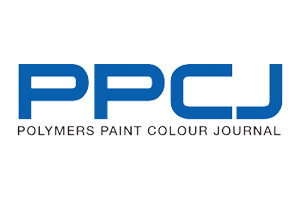
In an industry where the value chain and the master product are both complex, it is hardly surprising that developing an all-embracing programme of environmentally friendly business activities is taking time. That said, however, in my position as Managing Director of the self-adhesive label industry association in Europe, I have seen significant advances in the last year that are delivering practical, quantifiable results that prove our industry has genuinely moved on from rhetoric to establishing a real pathway to sustainability.
FINAT has enthusiastically embraced the key role of providing its members with an information source on all aspects of environmental conformance, driven today by specialist sub-committees focussing on sustainability and recycling as well as technical issues and test methods, and industry trends, and supported by the association’s raft of industry standard technical publications and test methods and events around Europe. In the sustainability arena, FINAT is currently actively engaged in projects involving label release liner recycling, both paper and film; the recycling of label matrix waste into energy; solving the issues around contamination of thermoformed PET containers by self-adhesive labels; and defining the parameters for environmentally friendly adhesive technology.
FINAT’s partner association in the USA, The Tag & Label Manufacturers Institute (TLMI), is also extremely active in the area of sustainability. Its LIFE (Label Initiative for the Environment) programme offers an audited business sustainability certification process tailored to the label converting industry. TLMI has also separated its focus on sustainability issues into specific task forces – with matrix waste and spent release liner (again, both paper and film) the two main targets. With just one country to take care of, TLMI’s mission may seem simpler than that of FINAT, which mentors around 50 different sovereign states – but the distances involved in waste collection in the USA are challenging. According to TLMI, around 270,000 tons of label matrix waste are currently generated in North America and only an estimated 1% is recycled. A similar measurement for Europe is not available but I somehow doubt that the outcome would be any better.
It is also true to say that the focus on sustainability and recycling in our industry is now worldwide. The Global Label Association, L9, has unanimously committed to a reduced carbon footprint in every aspect of the self-adhesive labelling supply chain – from raw material manufacture to end-use application and spent liner recycling. The Association embraces members from Australia, Brazil, China, India, Japan, Mexico and New Zealand, as well as FINAT and TLMI, and is actively liaising with both brand owners and major retail groups, as well as the public sector to achieve environmental sustainability for self-adhesive labelling. This is an inspiring example of how, at a regional and local level, global goals can be pursued and achieved.
A growing spectrum of opportunities
Potential uses for both waste matrix and spent release liner – from closed-loop recycling through, for example, fuel pellets, engineered fuels and waste-to-energy are, of course, being identified, examined and recommended to member companies by all the label associations.
Of course, as in all responsible industries, the route to success in this arena begins with lean manufacturing practices and a reduced carbon footprint. FINAT member companies – including label converters, raw material suppliers, press and auxiliary equipment and automatic label applicator manufacturers, and self-adhesive laminators – are already experts here. At all levels of the chain, reduced set-up time and material waste have already been achieved and technology advances have delivered considerable energy savings in such areas as drying – both of labelstock during manufacturing and inks on-press. Digital technology advances have also streamlined pre-press activities as well as digital label print – both of which create a hugely flexible platform for label making that even enables multiple short label runs on the same labelstock to be ‘piggybacked’ on press for optimal efficiency in material, time and energy usage. In some European countries – significantly Germany – practical financial assistance in achieving technology advances in support of sustainability is offered. Additionally, leading labelstock laminators are also offering a collection service for labelstock waste products from their converter customers.
At our recent FINAT Congress, a ‘round-table discussion’ brought together a panel of label converters from both sides of the Atlantic who all confirmed – and proved – their commitment to grasp every opportunity to save waste, time and cost – both for the benefit of the environment and their businesses. It is at the converter level of the label industry that self-adhesive labels actually make their physical appearance and are then passed on to the brand manufacturers and contract packers who will apply them. While release liner plays its part in ensuring accurate, smooth, fast, label application at the packer’s premises, label matrix waste remains with the converter, in need of a solution that does not involve landfill.
Saying ‘no’ to landfill
It is one of FINAT’s major challenges to assist converters across Europe in making sustainable use of their matrix waste. The waste-to-energy channels already mentioned are an option. In addition label matrix waste can also today be recycled into wood-plastic composite products.
However, FINAT sees its prime role today as a facilitator in creating a ‘chain of custody’ for spent release liner involving the end-user. For end-user companies that choose to take advantage of it, financial payback is available from industrial recyclers for film release liner, both PET and PP. Siliconised paper release liner, however, requires more specialised treatment. In this respect, Germany has led the way. VskE, the German label association, has actively promoted the services of the specialist recycling company Lenzing Paper Mill in Austria, working with independent facilitators Cycle4green (C4G). Together, they are actively closing the loop between converter, end-user and recycler. A regular collection rota has been created for spent release liner from end-users’ packaging lines identified by converters and who are prepared to participate in the scheme. C4G manages the logistics – collecting and delivering recyclables — and maintains the day-to-day contacts with converters and brand owners ‘customers’.
Major release paper manufacturers too, have developed two important waste collection initiatives in central Europe. UPM offers a closed-loop system for release liner recycling in its paper production. Paper release liner is de-siliconised at UPM’s Plattling mill in Germany and then re-used as raw material for different paper grades. This initiative is open to the whole labelling value chain, across the whole of Europe, regardless of the origin or colour of the material. Customised liner waste collection and logistic solutions are offered, alongside the company’s labelstock waste management programme.
Most recently, Ahlstrom has announced it will collect spent glassine liner (supercalendered kraft paper) and recycle it into the production of the company’s speciality papers at its Osnabrück mill in Germany. Ahlstrom’s logistics partners will collect the material from brand owners or printers free-of-charge, provided a minimum collection quantity is met. The scheme will work across Germany, Belgium, Luxembourg and The Netherlands.
A parallel system is in the course of start-up in Switzerland, where three leading label printers have created a ‘map route’ of their customers in the country’s industrial areas, for collection of spent liner by logistics and support partners C4G for recycling at Lenzing. The scheme will be rolled out to smaller printers and their customers, as in Germany, in due course.
These pathways would appear to be the very best answer for reclaiming valuable spent paper release liner into new paper production: true closed-loop recycling. They, however, face the significant challenge of moving from being an opportunity to being a widely-adopted route, achieving economically-viable throughput volumes of spent liner to keep the mill systems running and reduce landfill. To give an example of the challenge, the label industry is so far contributing less than 10% of the Lenzing mill’s annual paper waste intake.
The long, long road to success
It is here, therefore, that the self-adhesive label industry needs help from the end-user brand-owning and contract packing companies who use its label products. Reaching the right people to set up liner collection is a difficult task. First, the converter or his representative needs to get ‘buy in’ from the sustainability leader in the end-user company – often a person at board level, far from the location of the packaging line the converter serves. That achieved, purchasing and packaging managers have to be convinced that there are sustainability improvements and cost savings to be made by buying into a label waste collection process – a process, which involves far smaller quantities than for, eg cartonboard or plastic films. Finally, the site manager must be contacted: he is finally the person with whom to organise preparation of spent liner waste and collection timings. This affirmation cycle can take weeks and months.
Please help!
There are, I believe, around 8000 end-user customers of self-adhesive label converters in the EU alone. All of them have a contribution to make to improving, not only the sustainability credentials of their own companies but also that of the self-adhesive label industry. In the process, liner collection and recycling can give new life to valuable paper-based products. On behalf of Europe’s 3000 or so self-adhesive label converters, I appeal to brand owners – especially those in high-volume market segments such as food, beverage and personal care – to facilitate a path to spent release liner collection. FINAT is here to help identify available local pathways that answer companies’ individual needs without creating difficulty or complexity. As raw material costs continue to escalate and the world’s natural resources diminish, this is a true opportunity to contribute to the sustainability of a leading product decoration technology.
For more information on current global recycling initiatives go to www.finat.com




